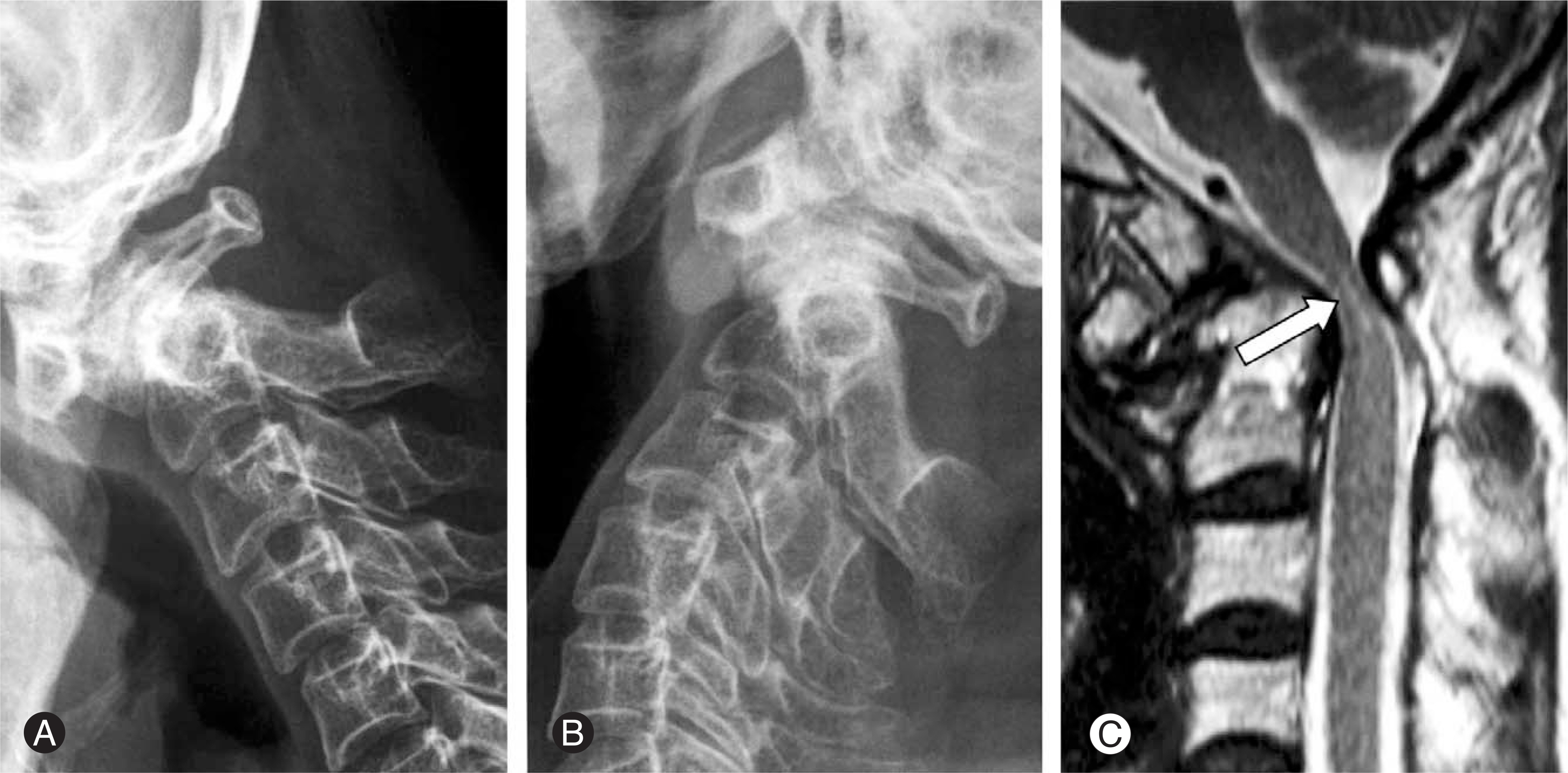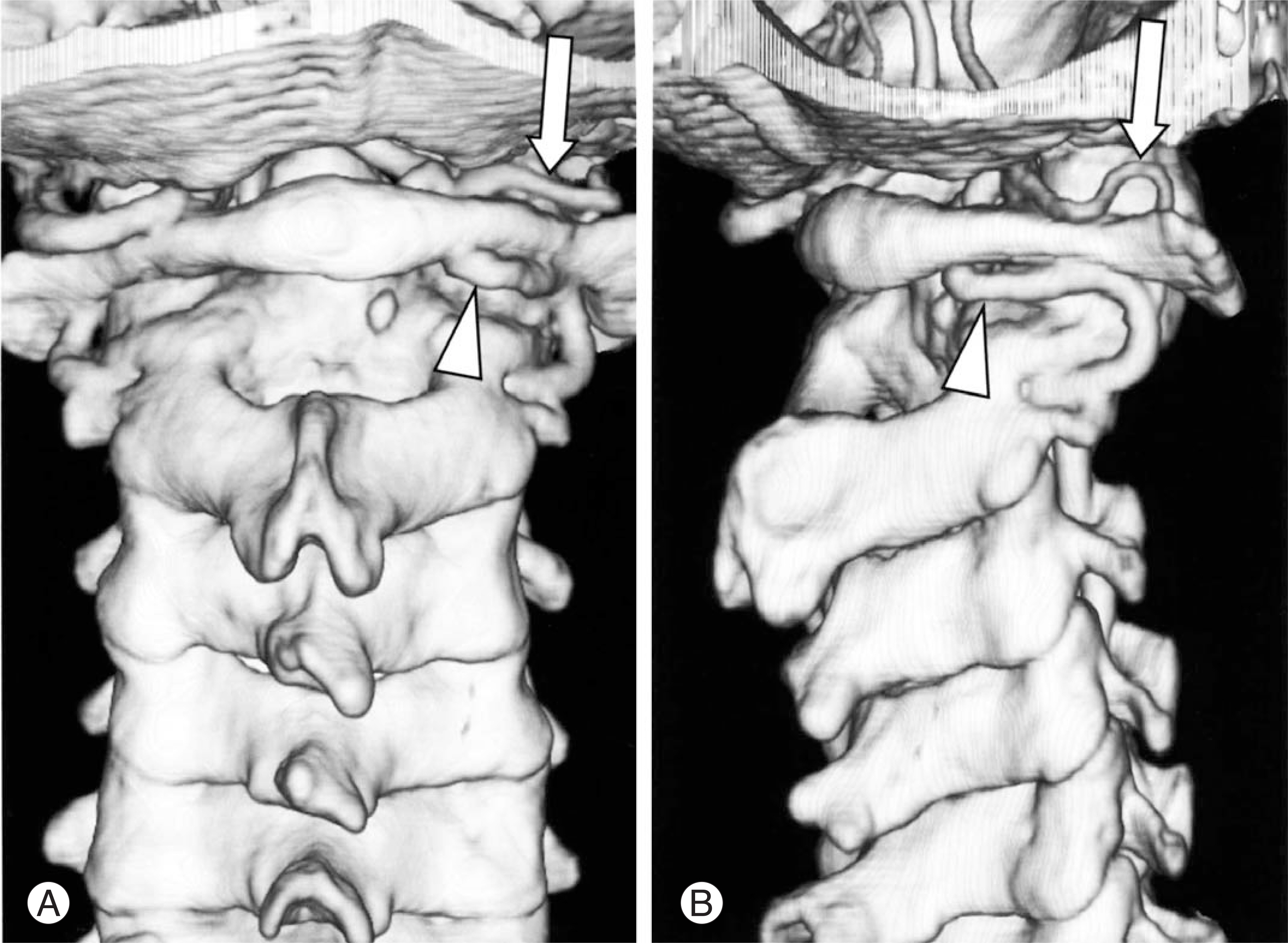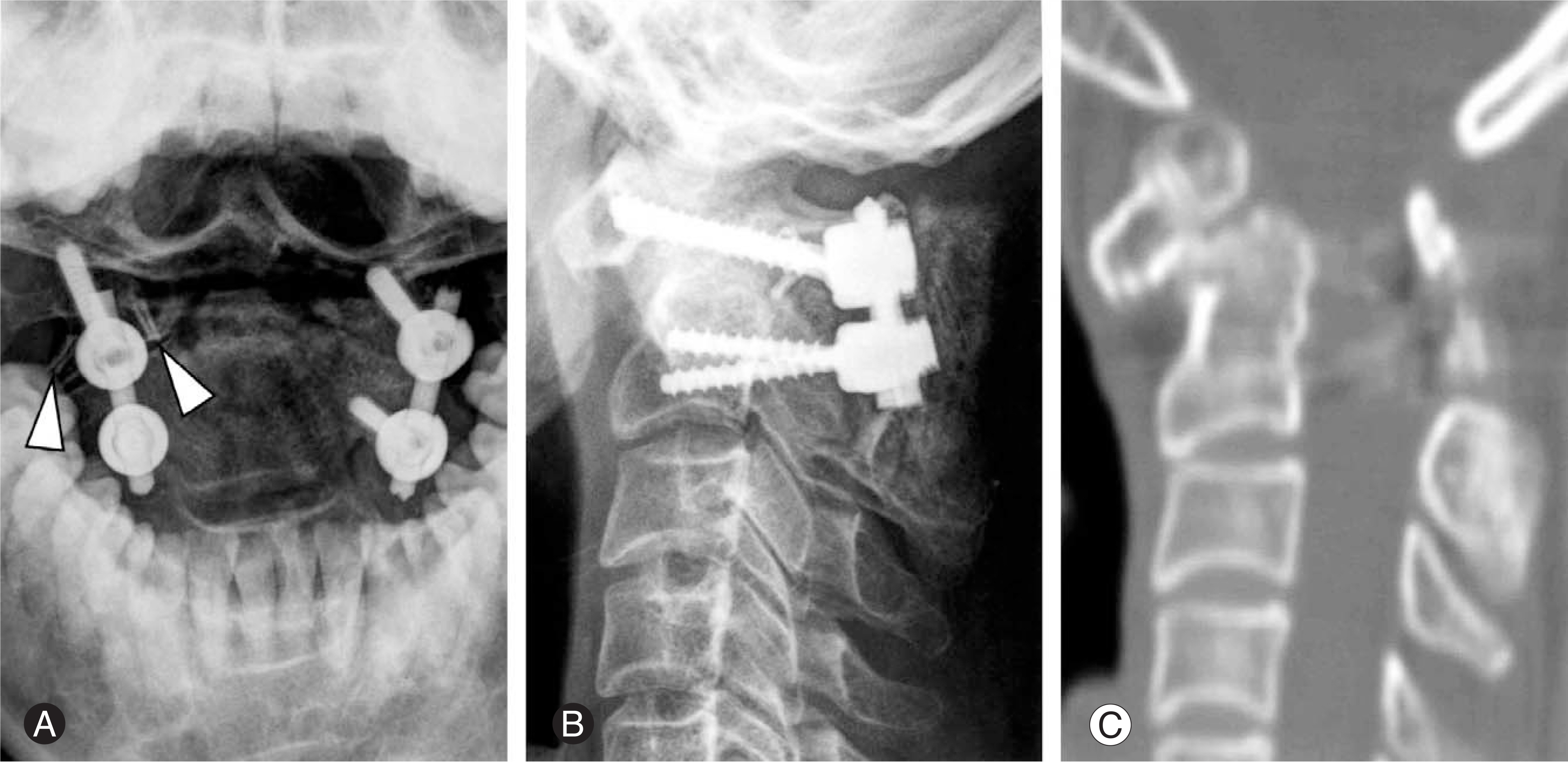J Korean Soc Spine Surg.
2006 Sep;13(3):205-209. 10.4184/jkss.2006.13.3.205.
C1-2 Instability associated with Duplicated Vertebral Artery: A Case Report
- Affiliations
-
- 1Department of Orthopaedic Surgery, Wonkwang University, Iksan, Korea.
- 2Department of Orthopaedic Surgery, Seoul National University College of Medicine, Seoul, Korea. ortho@hananet.net
- KMID: 2209643
- DOI: http://doi.org/10.4184/jkss.2006.13.3.205
Abstract
- A vertebral artery injury is one of the most critical complications of atlantoaxial fixation. Abnormal courses or congenital anomalies of the vertebral artery increase its risk. The authors report a case of a patient who had an atlantoaxial subluxation associated with severe spinal cord compression and a duplicated vertebral artery. The atlantoaxial subluxation, which was not reduced satisfactorily by an intraoperative head position change or direct manipulation of the atlas and axis, precluded a transarticular screw fixation. The lack of free space around the spinal cord precluded a sublaminar wiring. The duplicated vertebral artery made it difficult to insert C1 lateral mass screws and C2 pedicle screws with Harms' technique.
Figure
Reference
-
01). Asheesh B., Robert NH. Congenital anomalies of the cervical spine. Eismont FJ, Bell GR, editors. The Spine,. 5th ed.Philadelphia: Saunders;p. 648–652. 2006.02). Bloch O., Holly LT., Park J., Obasi C., Kim K., Johnson JP. Effect of frameless stereotaxy on the accuracy of C1-2 transarticular screw placement. J Neurosurg. 2001. 95(1 Suppl):74–79.
Article03). Harms J., Melcher RP. Posterior C1-C2 fusion with polyaxial screw and rod fixation. Spine. 2001. 26:2467–2471.
Article04). Karoly MD., Alan C. Congenital malformations of the base of the skull, atlas, and dens. Clark CR, editor. The Cervical of Spine,. 4th ed.Philadelphia: Lippincott Williams & Wilkins;p. 422–423. 2005.05). Paramore CG., Dickman CA., Sonntag VK. The anatom-ical suitability of the C1-2 complex for transarticular screw fixation. J Neurosurg. 1996. 85:221–224.
Article06). Randall TL. Congenital anomalies of the cervical spine. Frymoyer JW, Wiesel SW, editors. The Adult & Pediatric Spine,. 3rd ed.Philadelphia: Lippincott Williams & Wilkins;p. 614–615. 2004.07). Taitz C., Arensburg B. Erosion of the foramen transver-sarium of the axis. Anatomical observations. Acta Anat (Basel). 1989. 134:12–17.08). Taitz C., Nathan H., Arensburg B. Anatomical observations of the foramina transversaria. J Neurol Neurosurg Psychiatry. 1978. 41:170–176.
Article09). Tokuda K., Miyasaka K., Abe H, et al. Anomalous atlantoaxial portions of vertebral and posterior inferior cerebellar arteries. Neuroradiology. 1985. 27:410–413.
Article10). Warner WC. Anomalies of odontoid. Canale ST, editor. Campbell' s operative orthopaedics,. 10th ed.Philadelphia, Mosby;p. 1715–1733. 2003.
- Full Text Links
- Actions
-
Cited
- CITED
-
- Close
- Share
- Similar articles
-
- Duplicated Origin of the Left Vertebral Artery: A Case Report and Embryological Review
- Posterior C1-2 Stabilization Using Translaminar Screw Fixation of the Axis
- Cervicogenic Vertigo Treated by C1 Transverse Foramen Decompression : A Case Report
- Intraoperative Vertebral Artery Angiography to Guide C1-2 Transarticular Screw Fixation in a Patient with Athetoid Cerebral Palsy
- Posterior Atlantoaxial Fixation with a Combination of Pedicle Screws and a Laminar Screw in the Axis for a Unilateral High-riding Vertebral Artery




